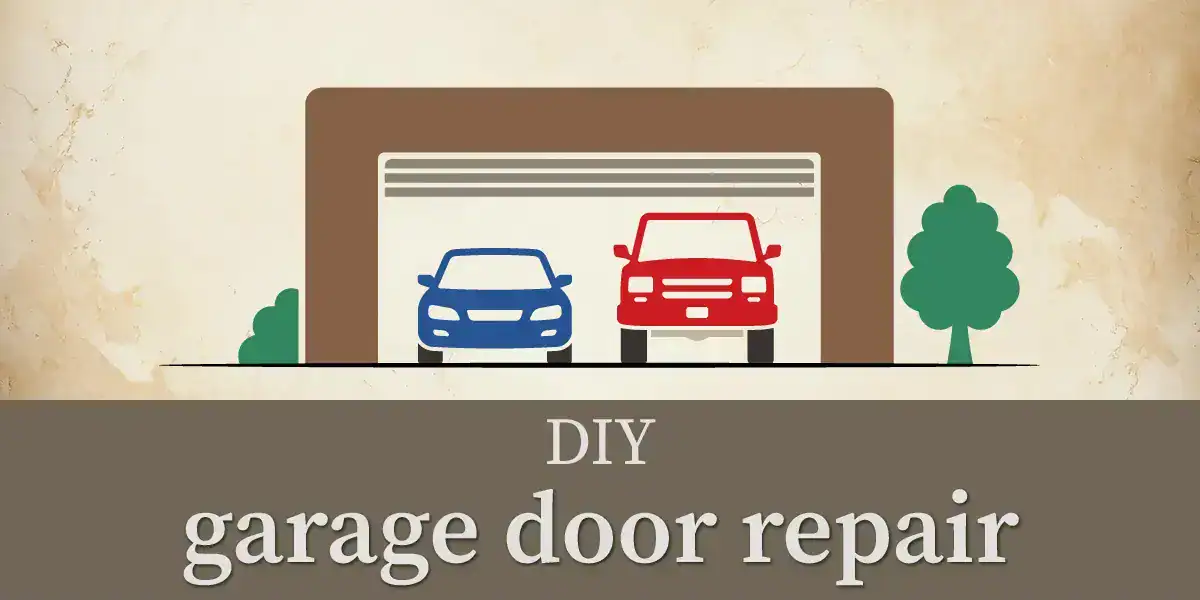Saturday at last!
It has been a rough week, so you get up late, trudge to the kitchen, switch on the coffee maker, and savor the thought of a day doing nada.
Yeah, good luck with that because at the top of your honey-do list is the nettlesome garage door, which has a will of its own and a clear mission to frustrate.
Your home will know no peace until the problem’s resolved.
Fortunately, many common garage door issues involve simple fixes and minimal effort. You’ll be back in the easy chair in no time, and you may even rule the roost briefly (very briefly) as a conquering DIY hero.
Here’s the information to start your DIY garage door adventure.
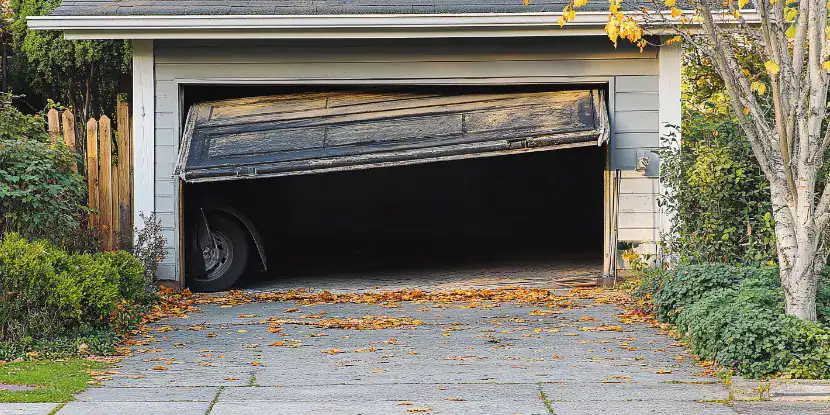
DIY? You can try.
Tools
Basic Kit
- Adjustable wrench set
- Phillips and flathead screwdrivers
- Socket wrench set
- Level (4-foot minimum)
- Rubber mallet
- Pliers
- Safety glasses
Specialized Items
- White lithium grease or garage door lubricant
- Replacement rollers and hinges
- Weatherstripping
- Cleaning supplies
- Ladder (if needed)
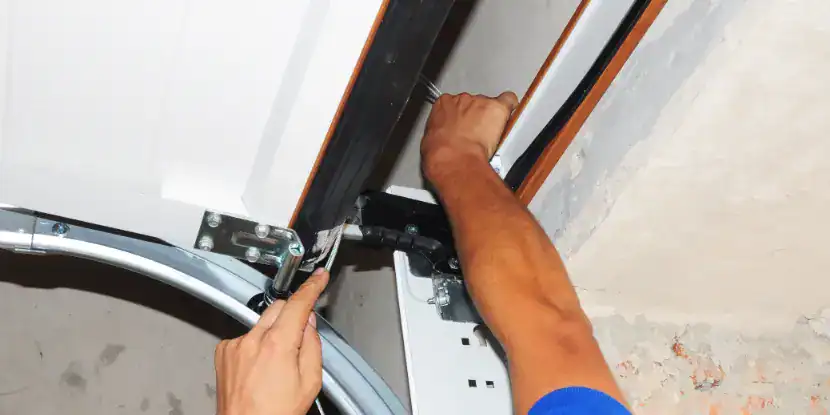
You’ll need the right tools to reach into nooks and crannies.
Common Garage Door Problems You Can Fix Yourself
Noisy Operation
A squeaky, grinding, or rattling garage door usually begs for basic maintenance rather than major repairs.
For chain-drive openers
- Apply white lithium grease to the chain every few months
- Check that the chain has about ¼ inch of slack
- Tighten loose bolts on the motor unit and track brackets
For belt-drive systems
- Clean the belt with a damp cloth
- Check belt tension — it should deflect about ½ inch when pressed
- Lubricate the pulleys and bearings
For all door types
- Oil the hinges, rollers, and pivot points with garage door lubricant
- Replace worn rollers (nylon rollers are quieter than steel)
- Check that all bolts and screws are tight
Door Won’t Open or Close Completely
Check the tracks
- Look for dents, debris, or misalignment
- Clean tracks with a damp cloth and remove any obstructions
- Use a level to ensure tracks are plumb
- Gently tap minor dents out with a rubber mallet
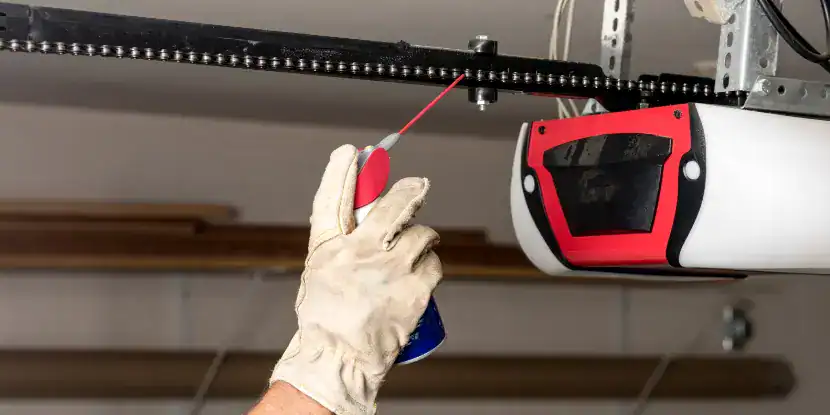
A shot of WD-40 in the right spot can make you look like a DIY hero.
Adjust the travel limits
- Locate the limit adjustment screws on your opener
- For doors that don’t close completely, turn the “down” limit screw clockwise in small increments
- For doors that don’t open fully, adjust the “up” limit screw
- Test after each minor adjustment
Check the sensors
- Clean the photo-eye sensors with a soft cloth
- Ensure sensors are aligned and facing each other
- Look for loose wires or damaged sensor housings
Remote Control Issues
Basic remote fixes
- Replace the battery (most common solution, duh)
- Check that the remote is within range (usually 50–100 feet)
- Ensure nothing is blocking the signal path
- Try reprogramming the remote according to your opener’s manual
For multiple remotes not working
- Check if the wall button still operates the door
- Look for a loose antenna wire on the opener motor
- Reset the opener by unplugging it for 30 seconds
Door Opens Too Fast or Too Slow
For doors opening too fast
- Locate the speed adjustment on your opener
- Turn the control clockwise to slow the operation
- Make small adjustments and test between changes
For doors moving too slowly
- Verify that the door is properly balanced (disconnect the opener and test manual operation)
- Clean and lubricate all moving parts
- Adjust the speed control counterclockwise
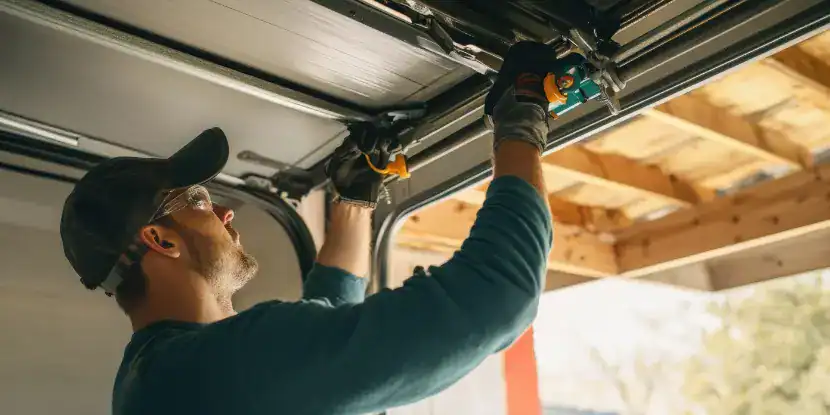
A man installs an automatic garage door.
Weather Stripping Replacement
Damaged weather stripping lets in drafts, moisture, and pests.
Bottom seal replacement
- Measure your door width and buy the appropriate sealing strip
- Remove the old seal by sliding it out of the track
- Clean the track thoroughly
- Slide the new seal into place, ensuring it sits flat against the ground
Side & top seals
- Remove old adhesive with a scraper
- Clean the surface with degreaser
- Apply new weather stripping, pressing firmly for adhesion
When to Call a Professional: Dangerous Repairs
Broken Springs
Garage door springs are under extreme tension and are dangerous if they snap during repair.
Never attempt to:
- Replace or adjust torsion springs yourself
- Work on extension springs without proper tools and experience
- “Quick fix” a broken spring with temporary solutions
Signs you have spring problems include a door that won’t open, opens unevenly, or slams shut. Call a professional immediately.
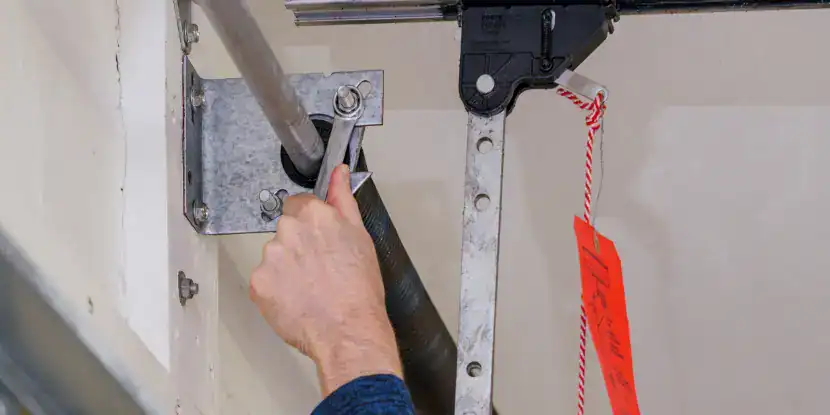
Anyone can tighten a nut. Just be sure it’s not holding a spring under tension!
Cable Replacement
Cables work with springs under high tension. A snapped cable can whip around with enough force to cause severe injury.
Leave cable work to professionals when:
- Cables are frayed or broken
- The door hangs at an angle
- You hear loud snapping sounds
Opener Motor Replacement
While some opener repairs are DIY-friendly, motor replacement involves electrical work and heavy lifting.
Call for professional help with:
- Burnt-out motors
- Electrical wiring issues
- Mounting problems with the opener unit
Track Replacement
Bent or damaged tracks require precise alignment, which is difficult without professional tools.
Professional track work is needed when:
- Tracks are severely bent or damaged
- Multiple track sections need replacement
- The door binds or sticks in multiple spots
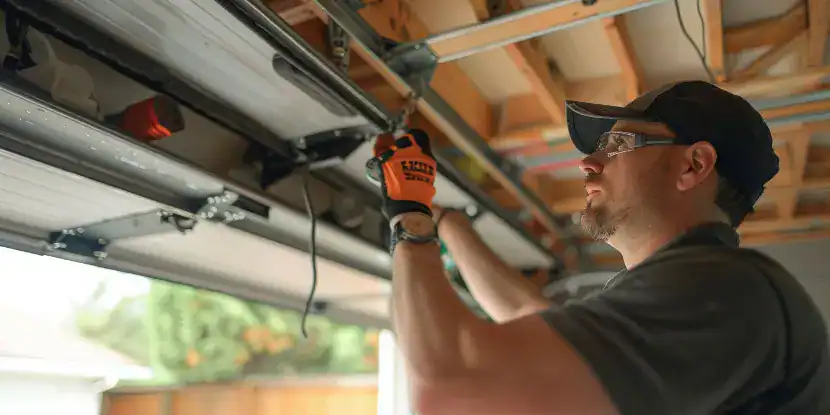
A man adjusts the chain of a garage door.
Different Door Types: What You Need to Know
Sectional Doors
The most common type has horizontal panels that roll up on tracks.
DIY-friendly repairs
- Hinge and roller replacement
- Panel alignment
- Weatherstripping
- Track cleaning and minor adjustments
Roll-up Doors
These single-piece doors roll into a coil above the opening.
Consider professional help for
- Spring adjustments (different system than sectional doors)
- Major track work
- Curtain replacement
Swing-out Doors
These traditional doors swing outward like large barn doors.
Good DIY projects:
- Hinge maintenance and replacement
- Hardware tightening
- Weather seal replacement
- Paint and finish work
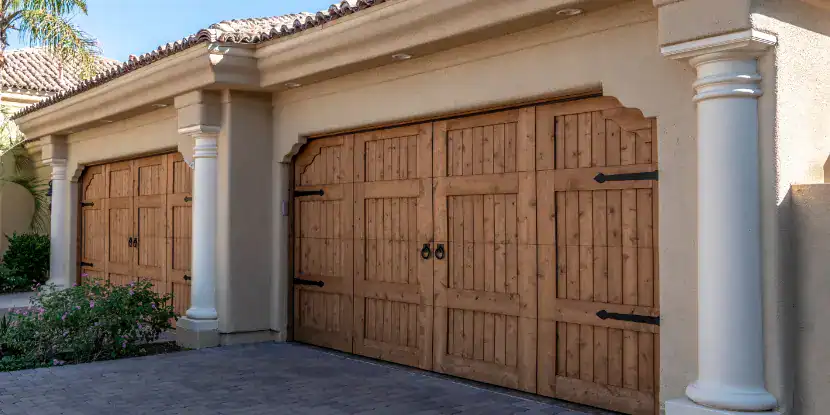
Swing out garage doors open wide instead of rolling up. They’re uncommon in Southern California, but you never know.
Preventive Maintenance Schedule
Monthly
- Visual inspection of all components
- Clean and lubricate moving parts
- Test safety features
Every 3 months
- Check and tighten all bolts and screws
- Clean tracks thoroughly
- Test door balance
Annually
- Professional tune-up and safety inspection
- Replace weather stripping as needed
- Update remote batteries
FAQs: DIY Garage Door Repairs
Q: How often should I lubricate my garage door?
Lubricate all moving parts every 3–6 months or more frequently in harsh climates. Use garage door lubricant rather than household oils.
Q: Why does my garage door reverse when closing?
This is usually caused by misaligned safety sensors, incorrect force settings, or an obstruction in the door’s path. Check the sensors first, then gradually adjust the force settings.
Q: Can I replace just one panel on a sectional door?
Yes, but matching panels can be difficult for older doors. Consider the age and condition of other panels before deciding on a partial replacement.
Q: How do I know if my garage door is balanced correctly?
Disconnect the opener and manually lift the door halfway. A balanced door should stay in place. If it falls or rises, the springs need professional adjustment.
Q: What’s the average lifespan of a garage door?
Garage doors last 15–30 years with proper maintenance, and openers typically last 10–15 years with regular use.
Q: Should I repair or replace an old garage door?
If repair costs exceed 50% of the replacement cost, or if the door is over 20 years old and has multiple problems, replacement is usually the best option.
Q: Can I install a garage door opener on any door?
Most doors can accommodate openers, but heavy or custom doors may require specific opener types. Check weight limits and compatibility before purchasing.
Q: Why does my garage door open by itself?
Radio frequency interference, faulty remote controls, or wiring issues may cause this. Try changing remote frequencies or unplugging nearby electronic devices.

